Related Research Articles
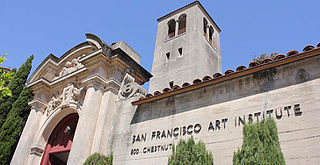
San Francisco Art Institute (SFAI) was a private college of contemporary art in San Francisco, California. Founded in 1871, SFAI was one of the oldest art schools in the United States and the oldest west of the Mississippi River. Approximately 220 undergraduates and 112 graduate students were enrolled in 2021. The institution was accredited by the Western Association of Schools and Colleges (WASC) and the National Association of Schools of Art and Design (NASAD), and was a member of the Association of Independent Colleges of Art and Design (AICAD). The school closed permanently in July 2022.

Richard Diebenkorn was an American painter and printmaker. His early work is associated with abstract expressionism and the Bay Area Figurative Movement of the 1950s and 1960s. In the late 1960s he began his extensive series of geometric, lyrical abstract paintings. Known as the Ocean Park paintings, these paintings were instrumental to his achievement of worldwide acclaim.
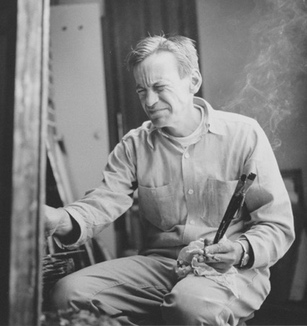
David Park was an American painter and a pioneer of the Bay Area Figurative Movement in painting during the 1950s.
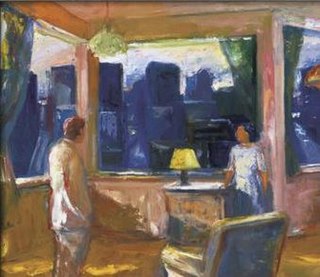
Elmer Nelson Bischoff was a visual artist in the San Francisco Bay Area. Bischoff, along with Richard Diebenkorn and David Park, was part of the post-World War II generation of artists who started as abstract painters and found their way back to figurative art.
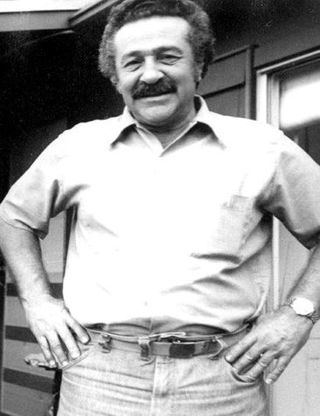
Nathan Oliveira was an American painter, printmaker, and sculptor, born in Oakland, California to immigrant Portuguese parents. Since the late 1950s, Oliveira has been the subject of nearly one hundred solo exhibitions, in addition to having been included in hundreds of group exhibitions in important museums and galleries worldwide. He taught studio art for several decades in California, beginning in the early 1950s, when he taught at the California College of Arts and Crafts in Oakland. After serving as a Visiting Artist at several universities, he became a Professor of Studio Art at Stanford University.
The Bay Area Figurative Movement was a mid-20th Century art movement made up of a group of artists in the San Francisco Bay Area who abandoned working in the prevailing style of Abstract Expressionism in favor of a return to figuration in painting during the 1950s and onward into the 1960s. Spanning two decades, this art movement is often broken down into three groups, or generations: the First Generation, the Bridge Generation, and the Second Generation.

Manuel John Neri Jr. was an American sculptor who is recognized for his life-size figurative sculptures in plaster, bronze, and marble. In Neri's work with the figure, he conveys an emotional inner state that is revealed through body language and gesture. Since 1965 his studio was in Benicia, California; in 1981 he purchased a studio in Carrara, Italy, for working in marble. Over four decades, beginning in the early 1970s, Neri worked primarily with the same model, Mary Julia Klimenko, creating drawings and sculptures that merge contemporary concerns with Modernist sculptural forms.
Roy De Forest was an American painter, sculptor, and teacher. He was involved in both the Funk art and Nut art movements in the Bay Area of California. De Forest's art is known for its quirky and comical fantasy lands filled with bright colors and creatures, most commonly dogs.
Henry Pierre Villierme was an American Californian painter associated with abstract expressionism and the Bay Area Figurative Movement. Villierme was considered one of the "Second Generation" members of the Bay Area Figurative Movement. Villierme first rose to prominence with a series of successful exhibitions in the late 1950s. From the 1960s to the 1980s Villierme continued to paint and sculpt in his studio, and in the late 1980s returned to public exhibitions.
William Theophilus Brown was an American artist. He became prominent as a member of the Bay Area Figurative Movement.
Arthur Okamura was an American artist, working in screen printing, drawing and painting. He lived in the San Francisco Bay Area, and was Professor Emeritus at the California College of the Arts in San Francisco, California. His work is in the permanent collections at the Smithsonian Institution in Washington, D.C., the Whitney Museum in New York, and the San Francisco Museum of Modern Art. He is associated with the San Francisco Renaissance. He illustrated numerous works of literature and poetry, published a book on games and toys for children, and created illustrations for the TV movie The People.
Roland Conrad Petersen is a Danish-born American painter, printmaker, and professor. His career spans over 50 years, primarily in the San Francisco Bay Area and is perhaps best-known for his "Picnic series" beginning in 1959 to today. He is part of the Bay Area Figurative Movement.
John Dubrow is an American painter.
Mala Breuer was an American Abstract Expressionist. Her work is in the collections of the San Francisco Museum of Modern Art, Albright Knox Art Gallery in Buffalo, and the Museum of Fine Arts, Santa Fe, New Mexico.
Fred Thomas Martin was an American artist, writer and arts administrator and educator who was active in the San Francisco Bay Area art scene since the late 1940s, He was a driving force of the Bay Area art scene from the mid 1950s until his retirement from the San Francisco Art Institute. In addition to his artistic practice, Martin was widely known for his work as a longtime administrator and Professor Emeritus at the San Francisco Art Institute (SFAI).
Michelle Gregor is a San Francisco-based figurative sculptor. She works in mid-fire stoneware ceramic and porcelain.
James Darrell Northrup Weeks was an American artist and an early member of the Bay Area Figurative Movement. Unlike many artists in the movement, Weeks was never known for painting in a non-representational style, instead using abstraction in the "ideas of painting." He further diverged from his colleagues in the rigidity of his figures, a characteristic that Anita Ventura described as "[painting] not for expression so much as comprehension."

June Felter, was an American painter and illustrator from the Bay Area. Her paintings are in museum collections including San Francisco Museum of Modern Art (SFMOMA), the Oakland Museum of California, Fine Arts Museum of San Francisco, National Gallery of Art, and the Berkeley Art Museum.
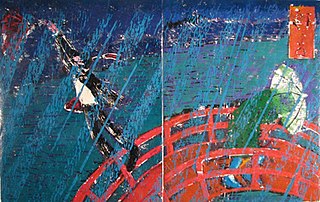
Robert Brokl is an American visual artist and activist based in the Bay Area, known for expressive woodblock printmaking and painting that has focused on the figure, landscape and travel for subject matter. His visual language combines the influences of German Expressionism, Japanese woodblock printing and the Bay Area Figurative Movement with a loosely autobiographical, Romantic interest in representing authentic personal experience, inner states and nature. Critics and curators characterize his style by its graphic line, expressive gestural brushwork, tactile surfaces and sensitivity to color, mood and light.
Nancy Genn is an American artist living and working in Berkeley, California known for works in a variety of media, including paintings, bronze sculpture, printmaking, and handmade paper rooted in the Japanese washi paper making tradition. Her work explores geometric abstraction, non-objective form, and calligraphic mark making, and features light, landscape, water, and architecture motifs. She is influenced by her extensive travels, and Asian craft, aesthetics and spiritual traditions.
References
- 1 2 "SFAI". sfai.edu. Retrieved 2020-11-28.
- 1 2 3 4 "Bruce McGaw". John Natsoulas Gallery. Retrieved 2020-11-28.
- ↑ "Bruce McGaw | artnet". www.artnet.com. Retrieved 2020-11-28.